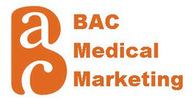After deciding that an apology should be offered, it is essential to do it well. A badly done apology can make things worse for both the patient and the professional. A well-done apology involves at least four parts: acknowledgement, explanation, expression of remorse and reparation.
The high emotion surrounding an apology warrants that it occur at the right time and place. If you do it too soon, you won't know enough facts. If you wait too long, you might be suspected of deception or disregard. Ensure sufficient time, a comfortable physical layout and adequate privacy so that a meaningful, and likely emotional, conversation can take place. Consider who should be present: Who would the patient like in attendance? Should other members of the care team attend? Does someone from your organization's patient relations staff need to participate? Having more people participate increases the chance that all relevant concerns will be aired, but it also raises the risk that the moment will be less personal and, perhaps, less effective.
Be aware of your body language as you get ready to begin your apology. First, sit down and maintain an open and receptive posture (no crossed arms or speaking over the shoulder). Maintain eye contact, and speak in a professional and empathic manner. Avoid jargon, defensive statements or angry rebuttals. Facial expressions and body language will likely be remembered as much as words.
Focus on listening. Begin by asking the patient - and, if present, family members - about their understanding of what happened. This will provide insight into their interpretation of the facts and will highlight potential gaps in their knowledge or possible misperceptions. After their explanation, describe in chronologic order what happened when and why various interventions were taken, or not taken, at each step. Explain the error that occurred, let them know that you share their frustration that the mistake happened, and express your sincere remorse.
It is especially important to patients to find meaning in their experience. To the extent possible, describe what their outcome will mean for them, what can be done to prevent similar errors from occurring and how others may be helped by what was learned. If possible, offer restitution. Obviously, any monetary amounts would need coordination with and possible approval by institutional or insurance carrier representatives, as appropriate, before discussing them in specific terms.
Who apologizes
The patient's personal physician often is in the best position to explain what happened and to express sorrow over the outcome; a long-trusted relationship goes a long way toward helping the healing. If the personal physician was not responsible for the error, then the person who made the mistake should apologize, perhaps with the personal physician in attendance. When a trainee (e.g., a resident physician or a medical student) has committed the error, that person should be accompanied by the attending physician when making the apology. When the error is due to systems or institutional failure, it might be an administrator who should apologize. Should the responsible person not be identifiable, or able or willing to apologize, then the personal physician or organizational leader should make the apology.
Time for reflection
Learning to give a skilled apology without improving on patient safety is like perfecting firefighting while ignoring fire prevention. Start by practicing reflective medicine. Think about each hospital admission as a possible failure in outpatient management. This develops the habit of doing root cause analysis of why your patient deteriorated to the point of requiring hospitalization. This, in turn, can lead to changes in practice routines (e.g., arranging for a nurse call the day after an office visit for a chronic obstructive pulmonary disease exacerbation). Many larger groups now have patient safety officers who are responsible for overseeing safety practices. Create an "oops" box - known in hospitals as a repository for incident reports - that allows staff to report events or routines that caused, or could have caused, error.
Beware the handoff. The transfer of responsibility for care from one clinician to another is one of the high-risk moments in health care. Electronic sign-outs or communication through unit clerks or paging services may suffice for stable patients, but a real-time conversation in person or by phone is usually needed for patients who are fragile, critically ill or high risk (e.g., their cases involve social issues, including problems in previous care).
Electronic records offer great potential to improve the safety of care by eliminating illegibility, making more information available more easily, providing warning signals and reminder prompts, and facilitating easier identification of practice patterns and potential problems (e.g., notifying patients on a specific medication of newly released drug alerts or recalls). At the same time, however, poorly designed electronic records may allow clinicians to dump huge volumes of text that obscure the important data, document histories or exams that were less complete than represented, or generate so many warning messages that they become an ignored blur.
Perfect care is an ideal that can only be pursued, not achieved. Individual effort can assist in that pursuit, but the most substantial improvements will occur through system redesign, which requires a reflective approach to care and the commitment of all members of the care team. In the journey to better care, missteps and trips will occur. Meanwhile, skill in the art of apology will be needed.
The aftermath
One potentially vexing decision for a family physician who commits an error and apologizes is whether to continue as the patient's personal physician. Like most difficult questions, the answer will depend on the circumstances and the people involved. Continuing the professional relationship may be too emotionally difficult for the patient or the doctor. Yet, terminating the relationship, if not handled properly, may leave the physician vulnerable to allegations of abandonment. If the patient or family is unable to forgive the doctor, then they will likely answer the question themselves by seeking care from another physician. Even when there seems to be genuine forgiveness, it may not be appropriate for the doctor to continue as the patient's physician if the doctor cannot maintain the necessary professional objectivity in future stressful situations involving the patient. Doctors who have erred in the care of a patient may attempt to compensate by over-responding when the patient develops subsequent problems.
Should the relationship continue, the patient will expect, and deserve, extra-attentive care in order to validate the essence of an apology ("I am sorry for what I did, and I will do my best to avoid future mistakes."). Giving the patient special attention is also the right thing to do; when someone has been injured by another's error, there is a duty to prevent further harm from happening.
An apology puts the health care professional in the unfamiliar and vulnerable position of being dependent on the patient for something that only the patient can provide: forgiveness. Thus, it represents a shift in power and a kind of role reversal. A sincere apology cannot heal all wounds - it will not immunize the professional against litigation or other retribution. It is, however, the right thing to do and is considered an ethical duty for the professional. For the patient, it begins the healing. For the professional, it allows forgiveness.

 RSS Feed
RSS Feed































